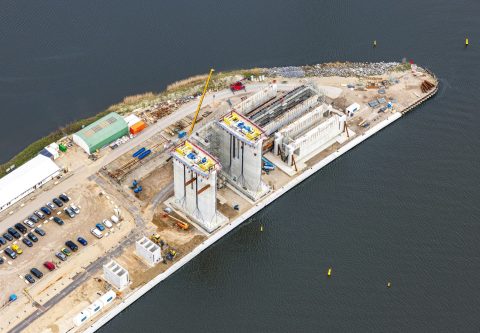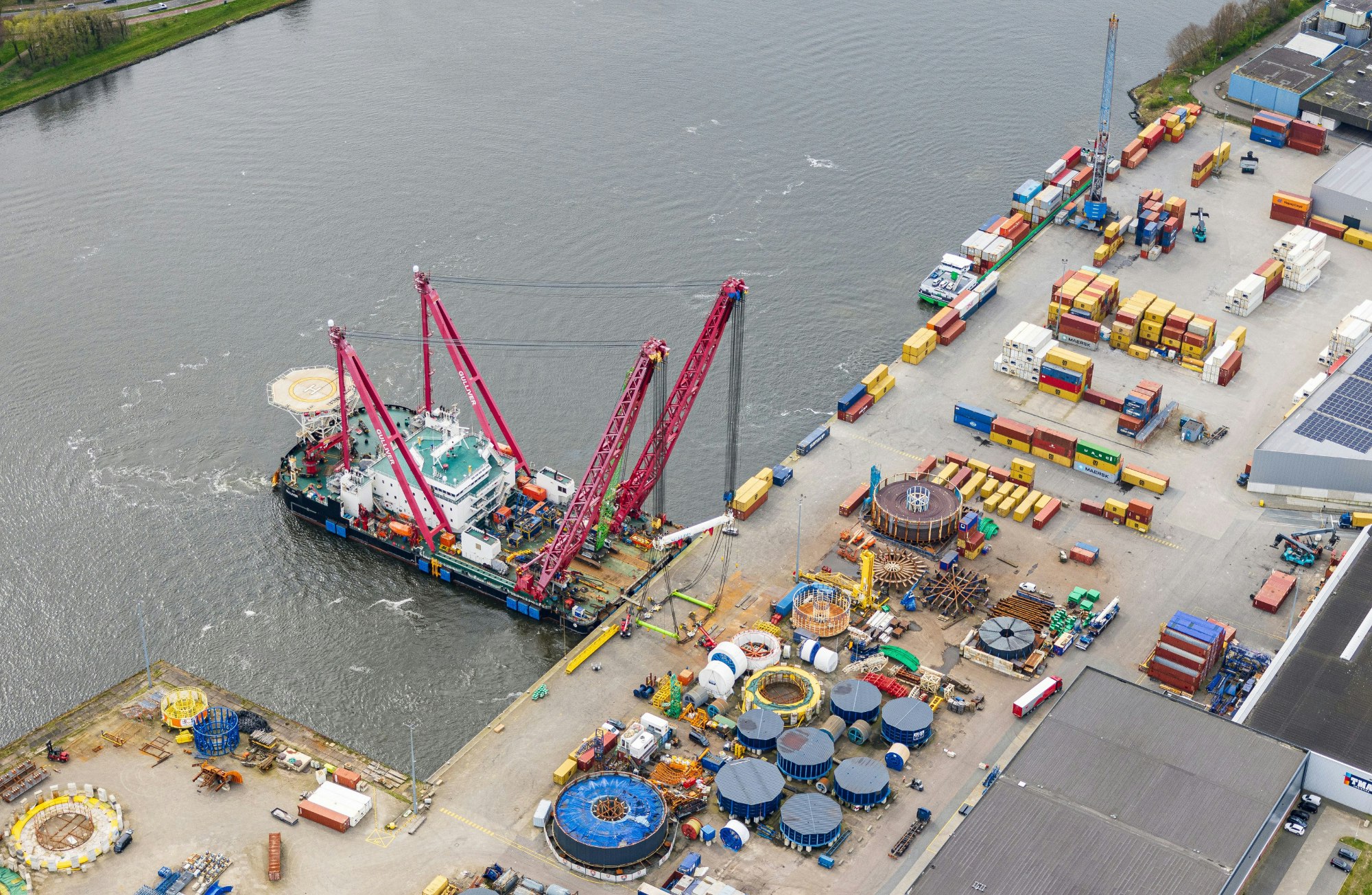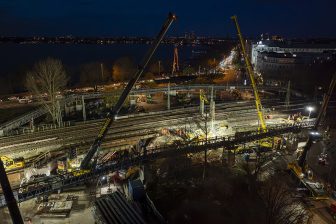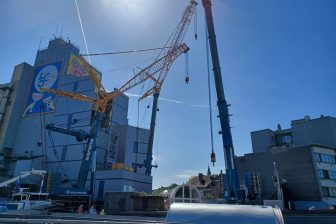
Heavy-lifting operation completed in IJmuiden
A major heavy-lifting operation took place over the weekend in the Binnenspuikanaal of the IJmuiden lock complex. Directorate-General of the Ministry of Infrastructure and Water Management of the Netherlands (Rijkswaterstaat) said that two large pillars of the Zoutdam Ijmuiden have been placed in their final position in a controlled manner.
The lifting of the first pillar started early on Saturday morning, March 30. In total, the lifting of the two pillars, each 27.5 metres high, 8 metres wide and weighing almost 3,000 tons, took approximately 30 hours, according to Rijkswaterstaat.
Over the weekend of March 30th and 31st, the weather conditions were ideal to carry out the lifting work. The wind needed not to be too strong, visibility was good and the water flow in the Binnenspuikanaal was not too fast. The original plan was to place the pillars on Wednesday, April 3 and Thursday, April 4, 2024. However, the contractor Van Hattum en Blankevoort, in consultation with Rijkswaterstaat, decided to bring forward the operation as the wind force on April 4th was expected to be unfavourable for safe lifting.

The enormous crane ship Gulliver was hired to complete the heavy-lifting operation. The vessel features two cranes with a combined lifting capacity of 4,000 tons. A total of more than 100 people divided over 2 teams were deployed this weekend to install the pillars.
Salt dam
The salt sam is a structure designed to selectively discharge saltwater into the North Sea, thereby preventing excessive salinization of the North Sea Canal via the IJmuiden Sea Lock. The Noordersluis contributes far less saltwater to the canal compared to the IJmuiden Sea Lock. Excessive amounts of saltwater can have harmful effects on nature, agriculture, horticulture, and drinking water. Rijkswaterstaat employs the salt dam to regulate saltwater flows and mitigate these negative effects.
De eerste pijler van de #ZoutdamIJmuiden is gecontroleerd afgezonken en staat op zijn plek in het Binnenspuikanaal van Sluizencomplex IJmuiden. 🛠️ 👷We gaan nu meteen door met pijler #2. Ook het hijsen van deze pijler is gewoon te volgen via de webcam 👉https://t.co/KSa66fmnmG pic.twitter.com/beWTfJXH6u
— Rijkswaterstaat regio Noord-Holland (@RWS_WNN) March 30, 2024
The construction of Zoutdam IJmuiden started more than a year ago. The various parts, such as the pillars and walls of the salt dam, are pre-built on land. Approximately 1000 cubic metres of concrete per pillar was used for the.
Anchors were also placed when the concrete was poured. The anchors, just like the lifting frames attached to the anchors, were needed to lift the pillars and place them in their final location in the Binnenspuikanaal. The pillars were still hollow during the heavy-lifting operation making it an easier job. Now that the pillars are in place, they are filled with sand.
The next milestone in the project is this summer when the walls will be installed. This autumn, a steel pocket door will be installed in the construction as the final part. This door is necessary to allow ships to pass for maintenance at the pumping station. The salt dam is scheduled to be put into use at the end of 2024.
You just read one of our premium articles free of charge
Register now to keep reading premium articles.



